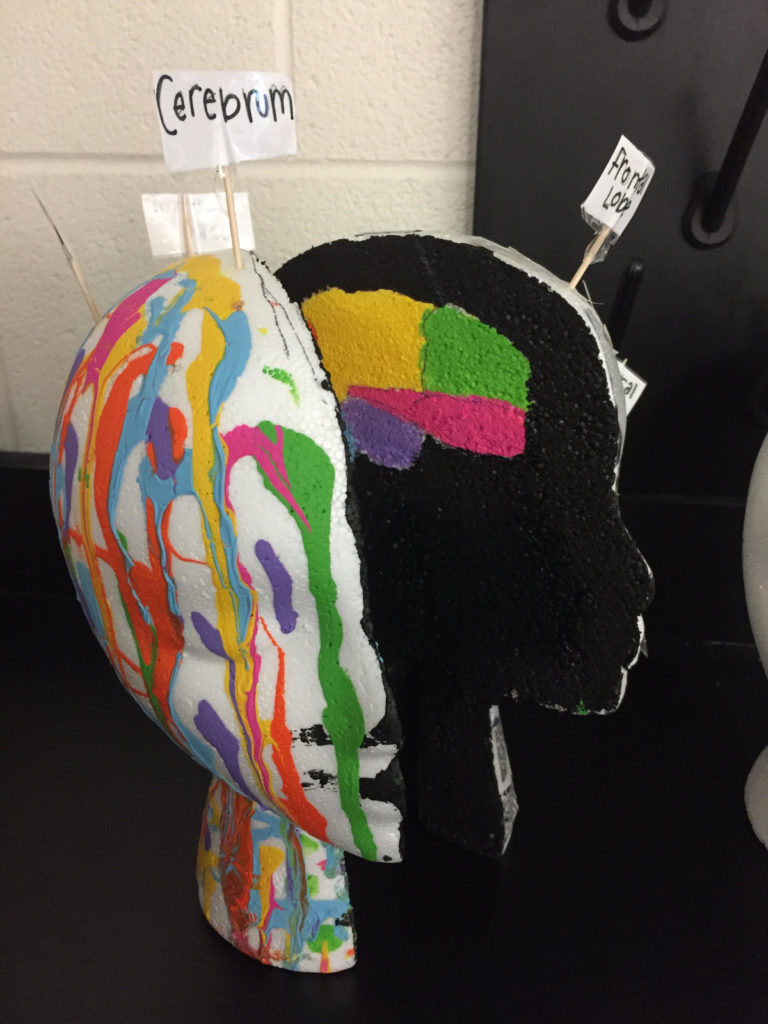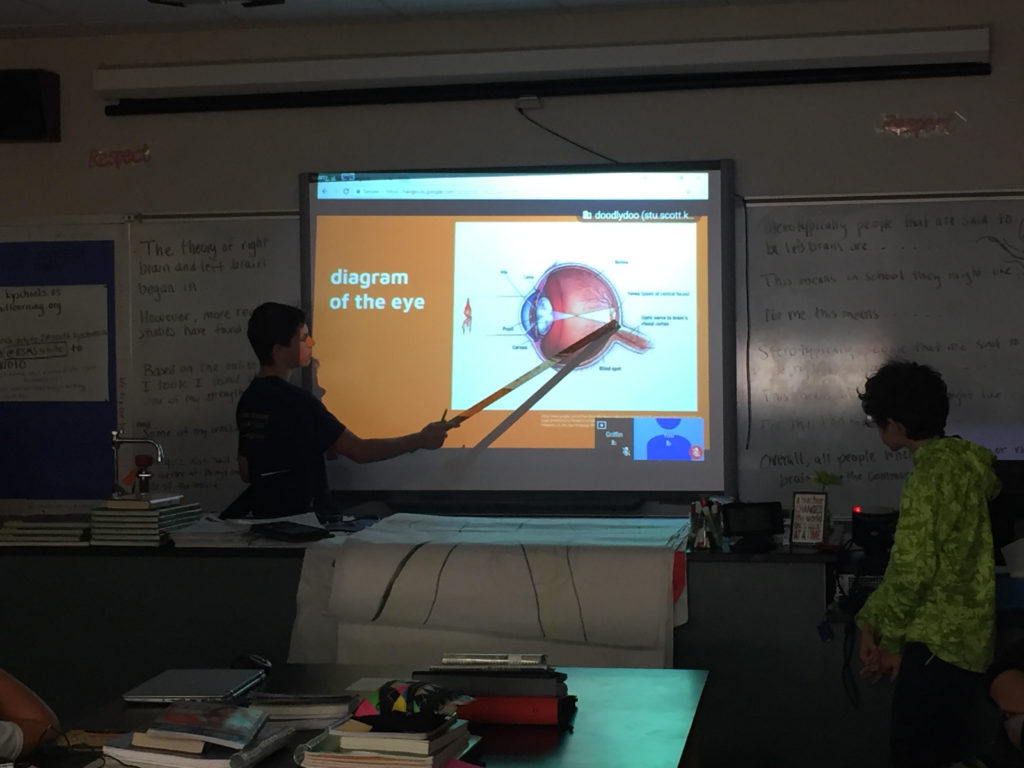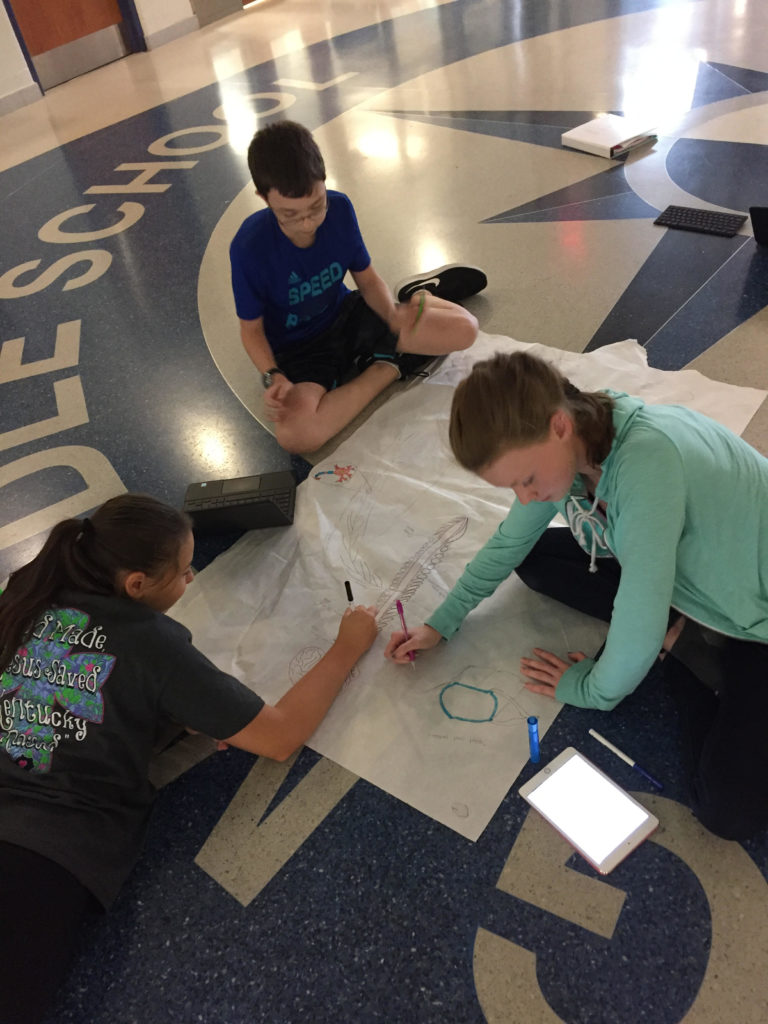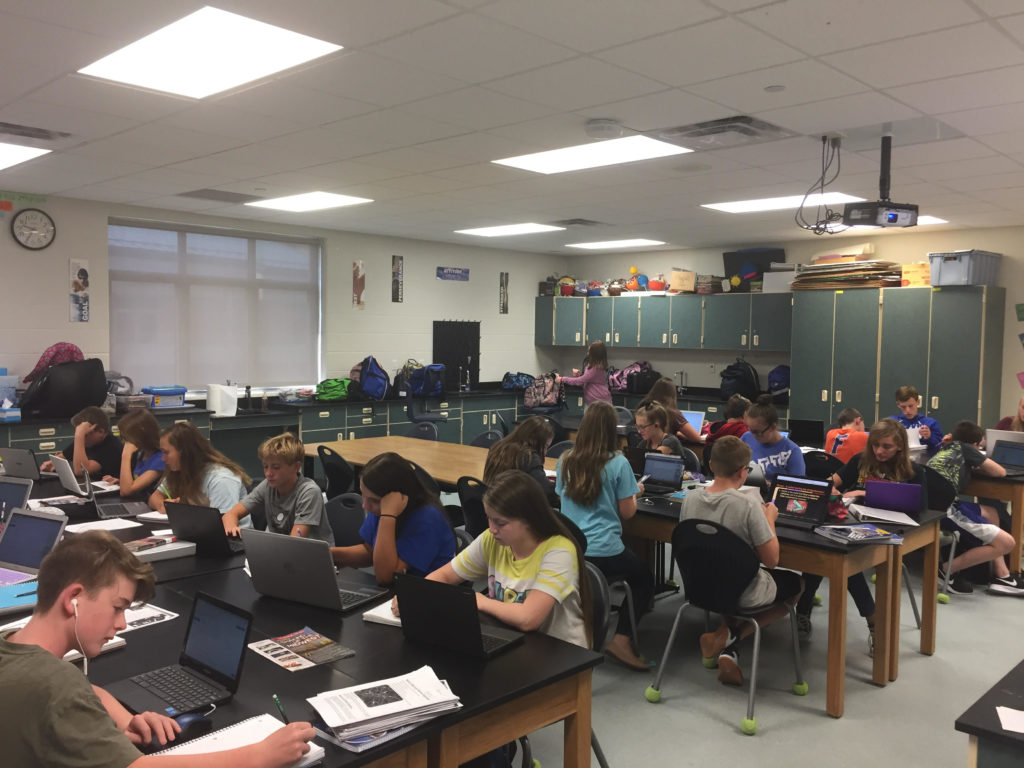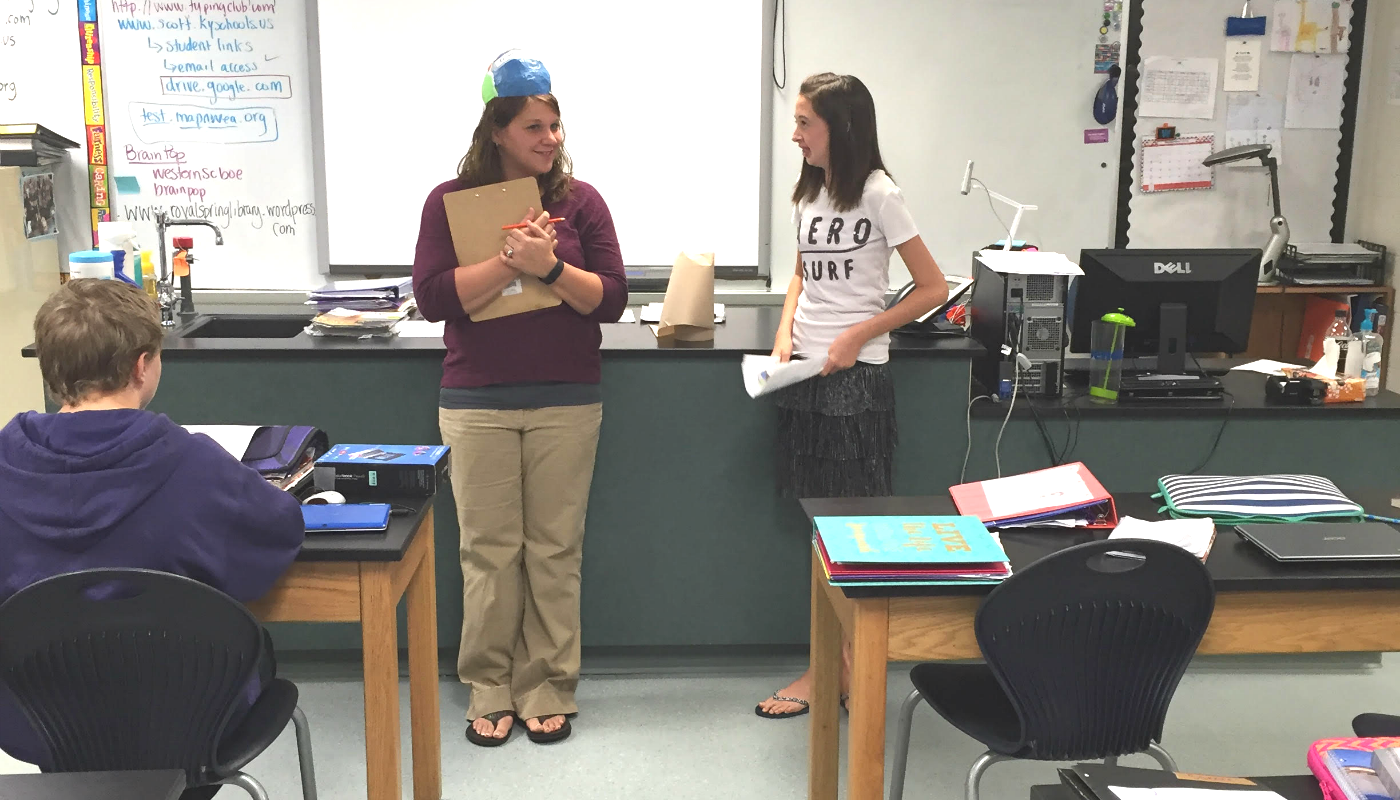
I’ve been a teacher for 10 years. I’ve seen the ups and downs of teaching. I never expected that I would feel like a first year teacher again — but that’s exactly what happened when my school introduced the Summit Learning Program, a personalized learning program that emphasizes Cognitive Skills and college and career readiness.
It was my hardest year teaching yet, but also my most rewarding.
As a middle school science teacher at Royal Spring Middle School in Georgetown, Kentucky, I teach a unit every year on the nervous system and the brain, part of the Kentucky Core Academic Standards. Normally we might cover the different areas of the brain, their functions, and how a signal travels through a nerve, and then take a test.
With Summit Learning, I took a new approach to my usual unit on the brain.
Bringing Curriculum to Life With Real-World Projects
Instead of focusing on preparing students for a test, I asked my students to make a model of the brain and give an oral presentation connecting it back to how they learn. Relating content knowledge to life experience was new to both my students and myself as a teacher.
I was blown away by the results.
My eighth-grade students bravely stood up in front of the class and articulated the different lobes of the brain, how those lobes of the brain aid in their learning process, and how that connects with concepts like a growth mindset versus a fixed mindset and different learning styles. Students were not only able to pass a test about the content they had learned; they were also able to apply what they had learned to their own lives.
Students lacking confidence in their presentations were able to identify the specific presentation skills they were struggling with to improve throughout the year. We were able to set up workshops about how to be better presenters, with opportunities for them to practice presenting to peers to help them build confidence throughout the year.
Making Learning Relevant to Students’ Lives
Later in the year, we learned about the Greenhouse gas effect. Using a trash bag and a thermometer, my students modeled how heat is trapped inside the atmosphere. Then, I asked them to draw parallels with how CO2 levels are rising in the atmosphere and compare that to the data from our trash bag experiment.
At the end of the unit, we held a Socratic seminar where students discussed the impact of global warming on different areas of the world. To make the project relevant to students’ lives, I asked them to analyze the impact global warming could have on the horse industry and agriculture in nearby Lexington, Kentucky. Again, I was impressed by the connections the students were able to make!
I was able to track several stages of this project through the Summit Learning Platform to see, in real-time, what my students are working on. I could see which kids were able to make the connections to the Greenhouse gas effect, and which kids were still behind.
Because of the flexibility of Summit Learning, I could then let some kids move on to the next assignment, and pull others aside to have an impromptu workshop or more in-depth teaching. I loved being able to easily see what was missing, and having the time to explore with the students that needed more help.
Building Knowledge & Habits For Life, Not Just Tests
The Summit Learning Program uses real-world examples like these to teach kids content and life skills.
The curriculum isn’t just built around retaining knowledge — it’s also about teaching habits like perseverance and responsibility, habits that aren’t intentionally taught in a traditional classroom.
Students have the ability to work at their own pace, but with that comes the responsibility of owning their own progress throughout the year and connecting what they are learning to the projects they complete.
Students today have changed, jobs have changed, the skills they need to be successful are different, and the world has changed. For the most part education has stayed the same. I knew I needed a different approach to teaching. I knew my students needed a different approach to learning. Now after teaching with Summit Learning, I have new resources and new knowledge.
I have been able to help my students develop skills that I couldn’t or didn’t know how to before, and I have been able to get to know them on a much deeper level. Summit Learning has helped me provide for all my students the skills and education I know that they need in order to be successful in life.
Reaching All 150 Students, Every Day
I became a teacher ten years ago because I love building relationships with my students. I’ve found that I can most effectively teach them through the relationships I develop with them. But it’s hard to start finding those connections when I have 150 kids for 50 minutes a day.
Now, I have the time to learn more about my students and track their progress in real-time. Instead of teaching to the whole class everyday, I can reach each of them, understand their strengths and weaknesses and use those to help them become better learners.
It’s kind of like that statement, “you don’t realize what you’re missing until you have it.” Now that I’ve experienced teaching like this, there is no way I would be able to go back and feel like I am giving the students everything they need, deserve, and what I am capable to give as a teacher.
Using Summit Learning has helped me be an even more effective teacher. Even though this has been my hardest year teaching, I would never go back. I know that I’m staying true to my original philosophy of building relationships with my students, and I can’t wait to see what happens this school year!



